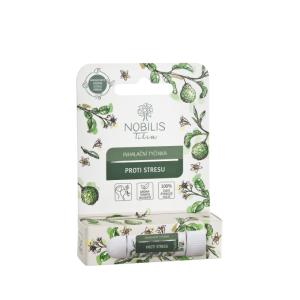
Discover the Benefits of Cyclic Eating for Women and Athletes

What is Cyclical Eating and Why is the World Talking About It?
In recent years, the term cyclical eating has been increasingly mentioned. This approach to food, however, is not just another trendy diet promising miraculous results. On the contrary, it is based on ancient principles that respect the natural rhythms of the body. But what does cyclical eating actually mean, and why is it gaining so many followers across generations?
Cyclical eating, sometimes referred to as eating cycles, is a way of planning meals to align with certain biological, hormonal, or physical cycles of the body. It's not only about when we eat, but also about what and how we eat during different periods. Popular variations include alternating days with higher and lower carbohydrate intake, adjusting diet to the phase of the menstrual cycle, or respecting daily biorhythms.
How Does Cyclical Eating Work in Practice?
One of the most common approaches is carbohydrate cycling, which has been known among athletes and fitness enthusiasts for decades. In practice, this means eating more carbohydrates on some days, such as those with intense training, while significantly reducing their intake on rest days. This way, the body uses energy reserves more efficiently, supports recovery, and maintains insulin sensitivity.
Another widespread form is menstrual cycle cyclical eating, which considers the four phases of the female cycle: follicular, ovulatory, luteal, and menstrual. In each phase, the body has different needs – for example, during ovulation, it is advisable to support the body with light, fresh foods, while in the luteal phase, when serotonin levels drop, a natural craving for carbohydrates occurs.
Finally, circadian rhythm eating is often mentioned, which adapts meal times to the natural daily rhythm of light and darkness. Thus, emphasis is placed on more substantial meals in the morning and forenoon, while lighter meals are chosen in the evening, or meals are omitted entirely.
Why Does Cyclical Eating Work?
The secret to success lies in respecting the biological needs of the body. The body is not a machine that requires the same amount of energy and nutrients every day. It changes according to activity, stress, hormonal changes, and the time of day. If we offer it food that reflects these changes, we naturally support metabolism, hormonal balance, and overall vitality.
Moreover, cyclical eating often leads to a natural reduction in caloric intake without the feeling of restriction. On days with lower carbohydrate or calorie intake, the body uses fat reserves, while on days with higher intake, glycogen stores are replenished, which supports performance and recovery.
Interestingly, similar approaches were common in traditional cultures. For example, seasonal eating was once a natural part of life – in summer, people ate more fresh fruits and vegetables, while in winter, heavier, more energy-rich foods prevailed. Modern cyclical eating, in a sense, restores the relationship with natural rhythms.
Who Can Benefit Most from Cyclical Eating?
Women who want to align their diet with their menstrual cycle can notice a huge advantage. Research shows that by respecting hormonal changes, it is possible to alleviate premenstrual syndrome (PMS), reduce fatigue, and support fertility. Athletes also use cyclical eating to improve performance and faster recovery.
However, the cyclical approach is also appreciated by those who simply want to lose weight or maintain a healthy weight long-term without the stress of constant calorie counting. Psychological well-being is key in this approach. As renowned nutrition expert Dr. Stacy Sims says: "Women are not small men. Our bodies function differently and deserve an individualized approach."
A specific example is Anna, who, after years of unsuccessful dieting, decided to try cyclical eating. She adapted her diet to her menstrual cycle and within a few months noticed not only weight loss but also improved mood and reduced menstrual pain. Additionally, she no longer felt stressed by her diet – she ate intuitively according to her body's needs.
Try our natural products
How to Start with Cyclical Eating?
You can start simply, without the need for complex plans. The first step is to listen to your body and its signals. Focusing on food quality, respecting natural hunger and satiety, and slightly adjusting your diet according to activity or cycle phase are great starting points.
If you want to easily set up a meal plan, you can take it like this: during more active days, increase carbohydrate intake – whole grains, fruits, or sweet potatoes work well. Conversely, on rest and recovery days, favor foods richer in fats and proteins, such as avocados, seeds, nuts, or legumes. In the luteal phase, it's good to focus on supporting serotonin with complex carbohydrates and foods full of tryptophan – opt for bananas or oatmeal. And during menstruation, be sure to replenish iron and zinc, ideally from beets, spinach, or pumpkin seeds.
The key is to be kind to yourself and notice how your body responds. If you don’t feel well with a certain regimen, there’s nothing wrong with making adjustments.
Advantages and Possible Pitfalls of Cyclical Eating
The most frequently mentioned advantages include:
- Better hormonal balance
- Support for a healthy metabolism
- Higher energy levels
- Natural weight management
- Greater mental well-being without strict restrictions
On the other hand, cyclical eating may not suit everyone. Some people may tend to go to extremes, such as overly restricting carbohydrates, which can lead to fatigue or metabolic disruption. Therefore, it is important to approach this style of eating flexibly and with respect for your individual needs.
It is also good to keep in mind that with serious health issues, it is advisable to consult dietary changes with a specialist.
Is Cyclical Eating the Future of Nutrition?
Given the growing interest in individualized approaches to nutrition, it seems that cyclical eating has a bright future. People are increasingly realizing that universal diets do not work for everyone and that listening to the body is key to true health.
Moreover, in a time when stress is a daily part of life and hormonal disorders are becoming more common, cyclical eating offers a natural and gentle way to support both body and mind.
Whether you decide to fully try cyclical eating or just take some principles from it, one thing is certain: a more attentive approach to your own body bears fruit in the form of better health, greater joy from food, and overall well-being. And that is surely a goal worth pursuing.


